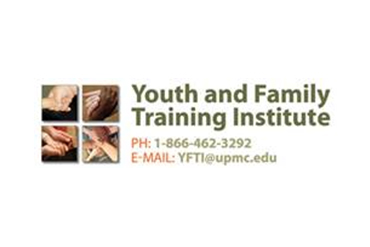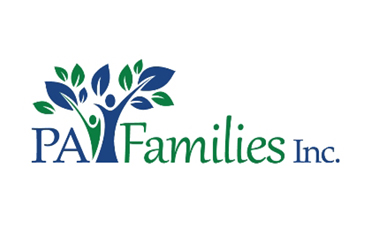PA Care Partnership Values
PA CARE PARTNERSHIP CORE VALUES
Why the PA Care Partnership Values Matter
The PA Care Partnership has developed eleven (11) Core Values, which are the foundation of a system of care. Additionally, the Values have been vetted and approved by the TA Network, part of the University of Maryland School of Social Work, the national technical assistance provider for System of Care grants, has detailed core System of Care Values. These values transition System of Care toward a public health framework. The focus is not only on treatment for individual children with serious behavioral health conditions but also on addressing promotion, prevention, early intervention, and education to improve total health—physical, oral, developmental, and behavioral—for identified populations of children and youth.
| Youth-Driven |
Youth-driven is having youth included in decisions that affect their care and well-being. Adults make the conscious decision not to manipulate youth or use them in a way that would suggest tokenism or mere decoration. Youth are trained, supported, have a valued voice, and earn a seat at state and local policy and program tables as their experience, confidence, and voice develops. Participation grows from being assigned and informed and evolves into youth leading and sharing with adults in decision-making. Youth are supported in various ways as they share their experiences and their opinions. Financial support is given as needed through stipends, transportation assistance, hotels, meals, and childcare, to sustain their input. Opportunities, like youth voice and leadership, are encouraged and made available to youth at county and state level child-serving systems, through the work of System of Care. |
| Family-Driven |
At the individual family level, Family-driven means families have a primary decision-making role in the care of their children. In leadership positions at their county and state, providing input into the policies, procedures, and funding decisions that govern the care of all children in their communities. Family-driven can be realized even within the context of delinquency and/or dependency proceedings, even when there is a feeling that it is not being driven by the family. In some situations, families may not have the opportunity to drive all decisions, but they should have the opportunity to be involved in the decisions. |
| Home and Community Based |
A system of care builds on the strengths of the community in which that family lives. Providing community-based services means having high-quality services accessible to families in the least restrictive setting possible. A community-based system of care requires systems to see the home, school, and neighborhood of the family from the perspective of its assets and to identify the natural supports in these familiar surroundings as part of a strengths-based approach. Community-based care has the culture of the family woven into the services provided. Access to the home, school, and neighborhood is seen as an asset to be used to identify and craft the strengths and quality of the natural supports into the family plan for the highest probability of positive outcomes for all. |
| Strength-Based and Individualized |
Strength-based and individualized practices and processes identify and build on the strengths of the family and child. Families are included and drive the creation of individual plans to provide needed services. Formal and informal supports are used to create services and supports for each child and family. Plans are individualized based on the needs of the youth, young adult, and family. The plan changes frequently based on ongoing individualized assessments of strengths and needs. Plans are created by teams comprising people who know the child and family, including neighbors; friends; family; and child welfare, mental health, education, substance abuse, and juvenile justice professionals. The team's major task is to create an individualized plan of care that is community and strength-based made up of formal and informal services and supports. |
| Trauma-Informed |
Trauma-Informed Care (TIC) is a holistic, person-centered approach to treatment that understands and incorporates the biological, psychological, neurological, and social impact of trauma on an individual. Implementing trauma-informed practices means that every part of an organization or program understands the effects of trauma on the individuals they serve and promotes cultural and organizational change in responding to the consumers/clients served. By recognizing trauma as an important factor impacting health throughout the lifespan, and by offering trauma-informed approaches and treatments in health care settings, provider organizations can more effectively treat patients, thereby potentially improving health outcomes, reducing avoidable care utilization, and curbing excess costs. |
| Culturally and Linguistically Competent |
Cultural and linguistic competence is the integration and transformation of knowledge, behaviors, and attitudes from and about individuals or groups that enable policymakers, administrators, youth, families, service providers, and system partners to work effectively in cross-cultural situations. Furthermore, linguistic competence is the capacity of policymakers, administrators, youth, families, service providers, and system partners to communicate effectively and convey information in a manner that is easily understood by diverse audiences including persons of limited English proficiency, those who have low literacy skills or are not literate, and individuals with disabilities. (Goode & Jones, 2006). Culture is vital to ensuring equity in Systems of Care because it is a set of attitudes, values, beliefs, symbols, and behaviors shared by a group of people, but different for each, and usually communicated from one generation to the next. Cultural and Linguistic Competence supports authentic collaborations between systems and community and natural supports through community partnerships and outreach to ensure youth and families receive culturally responsive care. |
| Connected to Natural and Helping Networks |
When working with people, we need to ask about those associations and relationships a person has that support them that are personal, not professional. They are natural helpers, and social supports may be family members, youth, and representatives from culturally diverse neighborhoods, and others who can provide a more “normalized” and enduring form of support to families and youth that can use formal services. Natural helping networks may include groups such as faith-based organizations, neighborhood watch groups, or informal social groups such as a neighborhood scrapbooking club. |
| Data-Driven, Quality and Outcomes Oriented |
System of Care aims to help families function better at home, in school, in the community, and throughout life by finding out what they truly need and providing the appropriate care. Collecting data from youth and families in a community allows decisions to be data-driven – relying on concrete information, rather than personal feelings, anecdotal, or historical experience. Data collected includes information such as a youth’s mental health diagnosis and system involvement as well as information related to the youth’s perception of his/her mental health care and his/her connectedness with people other than their mental health providers. Data is collected every six months from youth still enrolled in a county chosen provider program and ultimately provides an objective picture of what works and what doesn’t work locally and nationally. |
| County Leadership and Governance Boards |
Leadership Teams and Governance Boards may look and run in many different ways across Pennsylvania Ultimately, the Leadership/Governance Board is comprised of an equitable partnership of System, Family, and Youth leaders who work together to assure that the System of Care Values and Principals are incorporated in the framework of how decisions are made, policies are made and how services are planned and delivered. |
| Multi-System Integration |
Integrated serving systems ensure that services and supports are integrated at the system level, with linkages between the child and transition-aged serving agencies and programs across administrative and funding boundaries and mechanisms are established for system-level management, coordination, and integrated care management. The mission, vision, and desired outcomes of each system are incorporated in a person-centered approach that meets the needs of the youth and family’s social, emotional, and physical health care needs. Utilizing natural and community supports and services available to the youth and family in the county they reside. |
| Youth and Family Services and Supports Planning Process |
The youth and family-driven model facilitates integrated services and supports planning among youth, families, and key child-serving systems. These services and supports processes have staff who are trained to deliver the process; there is a clearly defined engagement process and assesses the youth and family individual needs. These are performed in the least restrictive settings, have required data collection and outcomes bases. To have supportive processes, youth and family have supports (peer) available as needed. |
PA CRISIS TEXT LINE







